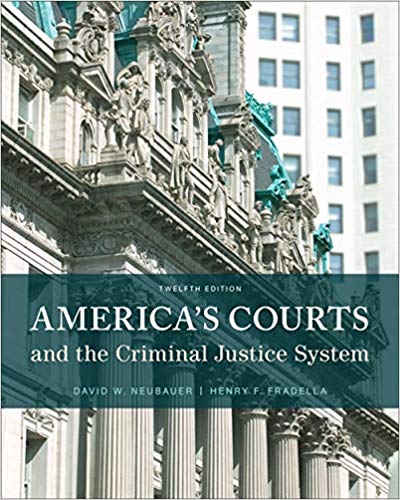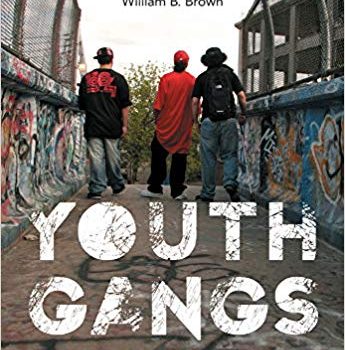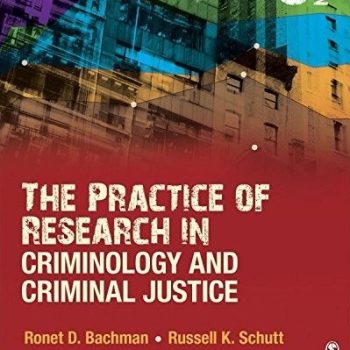Test Bank For America’s Courts and the Criminal Justice System 12th Edition by David W. Neubauer
Chapter 3
FEDERAL COURTS
TEST BANK
MULTIPLE CHOICE
1.The United States has a dual court system consisting of:
|
a. |
district and superior courts. |
c. |
criminal and civil courts. |
|
b. |
trial and appellate courts. |
d. |
state and federal courts. |
ANS: D REF: Basic Principles of Court Organization OBJ: 1 KEY: Bloom’s: Remember
2. What does the Supreme Court issue when it agrees to hear a case on appeal?
|
a. |
a writ of extradition |
|
b. |
a writ of jurisdiction |
|
c. |
a writ of stay |
|
d. |
a writ of certiorari |
ANS: D REF: U.S. Supreme Court OBJ: 4 KEY: Bloom’s: Remember
3. Original and appellate jurisdiction fall under what classification of jurisdiction?
|
a. |
geographical jurisdiction |
c. |
hierarchical jurisdiction |
|
b. |
subject matter jurisdiction |
d. |
general jurisdiction |
ANS: C REF: Basic Principles of Court Organization OBJ: 2 KEY: Bloom’s: Remember
4. What federal court has original jurisdiction over disputes between states?
|
a. |
Legislative Court |
c. |
Court of Appeals |
|
b. |
District Court |
d. |
Supreme Court |
ANS: D REF: Basic Principles of Court Organization OBJ: 1 KEY: Bloom’s: Remember
5. What kind of jurisdiction gives a court the power to review cases that have already been decided by another court?
a. appellate jurisdiction
b. concurrent jurisdiction
c. personal jurisdiction
d. subject matter jurisdiction
ANS: A REF: Basic Principles of Court Organization OBJ: 2 KEY: Bloom’s: Remember
6. During the Constitutional Convention, Anti-Federalists maintained the belief that a strong national government would:
a. provide political and economic unity.
b. weaken individual liberties.
c. abolish state courts.
d. create a uniform body of federal law.
ANS: B REF: History of the Federal Courts OBJ: 3 KEY: Bloom’s: Remember
7.Which Article of the U.S. Constitution provides the basis for the federal judiciary?
|
a. |
Article I |
c. |
Article III |
|
b. |
Article II |
d. |
Article IV |
ANS: C REF: History of the Federal Courts OBJ: 3 KEY: Bloom’s: Remember
8.Which of the following is not true of federal district court judges?
|
a. |
They are nominated by the President. |
|
b. |
They must be confirmed by the U.S. Senate. |
|
c. |
They must reside in their district. |
|
d. |
They are appointed for eight year terms. |
ANS: D REF: U.S. Magistrate Judges OBJ: 4 KEY: Bloom’s: Remember
9.The United States has how many U.S. District Courts?
|
a. |
59 |
c. |
94 |
|
b. |
78 |
d. |
111 |
ANS: C REF: U.S. Magistrate Judges OBJ: 4 KEY: Bloom’s: Remember
10. In 1968 Congress created what position to alleviate the workload of U.S. District Courts and to replace the former position of U.S. commissioner?
|
a. |
U.S. magistrate judges |
c. |
U.S. bankruptcy judges |
|
b. |
U.S. attorneys |
d. |
U.S. circuit justices |
ANS: A REF: U.S. Magistrate Judges OBJ: 3/4 KEY: Bloom’s: Remember









Reviews
There are no reviews yet.